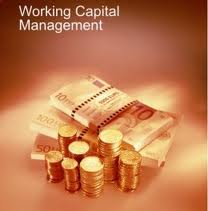The chance that an investment’s actual return will be different than the expected.It includes the possibility of loosing all or some of the original investment.The greater the variability or dispersion in the possible outcomes ,the greater the risk.Usually the Variance and standard deviation of return serve as the alternative statistical measure of the risk of security in an absolute sense. Similarly ,the covariance measure the risk of security relative to other security in a portfolio.
TYPES OF RISKS
- Default risk
Default risk arises from the failure on the art of the borrower or debtor to pay the specified amount of interest and repay the principle .Delay in the payment is also can be considered as of such risk.
- Financial risk
Since the presence of debt involves the legal or mandatory obligation to make specified payment at specified period of time ,there is a risk that earning of firm may not be sufficient to meet these obligation toward the creditors .In case of share holders ,the financial risk is not only mandatory nature of the debt obligation but also property of prior payments of the obligation.
financial risk is measured by debt/equity ratio of the firm.higher the ratio greater the financial risk.
- Liquidity Risk
Liquidity risk refers to a situation when it may not be possible to dispose off or sell the assets and cost in terms of money time.The greater the uncertainty about time element ,price concession ,and transaction cost,the greater the liquidity risk.Basically,here, the liquidity refers to their inability to meet the liabilities toward depositors when the want to withdraw their deposits.
- Call risk
Call risk is associated with the corporate bonds which are issued with call-back provision or option whereby the issuer has the right of redeeming the bond before their maturity .In case of such bond ,bond holder face the risk of giving up higher coupon bond ,reinvesting proceed only at lower interest rates ,and incurring the cost and inconvenience of reinvestment.
- Interest rate risk
It is variability in return on security due to change in the level of market interest rates,or it is the loss of principle of a fixed -return security due to an increase in the general level of interest rates.when interest rates rises ,market price of security drops ,and vice versa. the degree of this risk is directly related to length of time to maturity.
It has two component .1 –price risk ,2-reinvestment risk
Although It exists for all type of securities including stocks but bonds more directly.
- Exchange rate or Currency risk
It refers to cash flow variability experienced by economic unit engaged in international transaction or international exchange ,on account of uncertain and unexpected change in exchange rates.
- Business risk
It is the uncertainty of income flows that is caused due by nature of the firms business.
- Unsystematic and systematic risk
The variability of in the security’s total return that is not related to overall market variability is called unsystematic risk.An investor can reduce it by building the diversified portfolio.
The variability in a security’s total return that is directly associated with the overall movement in general market is called systematic risk .It is also called market risk.It is caused by various type of exogenous factor like recession,wars and structural change in economy.
Click here for government certification in Accounting, Banking & Finance





10 Comments. Leave new
Explained every risk in detail. Good!
Very well briefed
Good explanation..!
Interesting
Well explained.!
Informative
informative
Got Something new to read good work 😀
Liked it 😀
Helpful read.
well researched